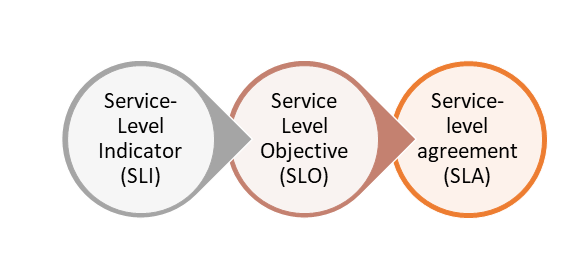Understanding SLOs and SLIs: Key Metrics for Service Performance and Reliability
 RAJAT AGRAHARI
RAJAT AGRAHARI
Service Level Objective (SLO)
An SLO is a specific measurable goal or target set for a particular service's performance. It is a key component of a Service Level Agreement (SLA) and defines the level of service expected by the customer. You can refer below examples.
99.9% availability for a web service.
Response time of less than 200 milliseconds for 95% of requests.
An error rate of less than 0.1% over a month.
Purpose:
To set clear expectations for service performance.
To provide a benchmark for measuring whether a service meets its performance targets.
Service Level Indicator (SLI)
An SLI is a quantitative measure of some aspect of the level of service that a system provides. It is used to track performance against the SLO.
Uptime percentage.
Average response time.
Number of errors or failed requests.
Purpose:
To provide metrics that can be monitored to ensure the service is meeting its SLOs.
To give insight into the current state of service performance.
Major Differences
Purpose:
SLO: Defines the target or goal for service performance.
SLI: Measures actual performance to determine if SLOs are being met.
Scope:
SLO: Broad, covering overall goals and expectations for service performance.
SLI: Specific, focusing on individual metrics that indicate performance.
Usage:
SLO: Used for setting expectations and agreements with customers.
SLI: Used for monitoring and operational management to ensure SLOs are met.
Main Points to Highlight
SLO is about setting goals and expectations for service performance.
SLI is about measuring and tracking specific metrics to see if those goals are being met.
Both are critical for maintaining high service quality and ensuring customer satisfaction.
SLOs provide a clear target, while SLIs offer the data needed to assess performance against that target.
Effective SLOs and SLIs help in proactive management of service reliability and performance.
These concepts are essential in modern IT service management and help organizations maintain high standards of service delivery.
Subscribe to my newsletter
Read articles from RAJAT AGRAHARI directly inside your inbox. Subscribe to the newsletter, and don't miss out.
Written by
